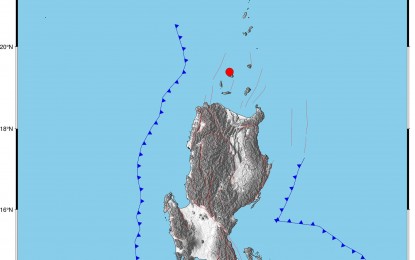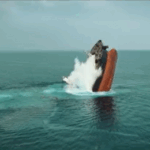LAOAG CITY – A magnitude 5.8 earthquake struck Cagayan province at 1:45 p.m. on Sunday.
The Philippine Institute of Volcanology and Seismology (Phivolcs) reported that the quake’s epicenter was located 14 kilometers northwest of Calayan, Cagayan, with a depth of 10 kilometers.
Intensity III shaking was felt in Claveria, Cagayan, while Intensity II was recorded in Basco, Batanes, and Intensity I in Penablanca, Cagayan.
Reported intensity is based on observations and accounts from people who experienced the earthquake, reflecting its perceived impact.
Instrumental intensity, however, is measured using specialized devices that detect ground acceleration.
Authorities advised residents in affected areas to remain cautious due to potential aftershocks, though no damage has been reported so far.
Laoag City
Laoag City is the capital of Ilocos Norte Province in the Philippines, known for its rich history and Spanish colonial heritage. Established in 1580, it features iconic landmarks like the sinking Sinking Bell Tower and the St. William’s Cathedral, both built during the Spanish era. The city also serves as a gateway to the scenic sand dunes of Paoay and other cultural attractions in the Ilocos Region.
Cagayan province
Cagayan province, located in the northeastern part of Luzon, Philippines, is known for its rich natural beauty, including the Sierra Madre mountains and the Cagayan River, the country’s longest. Historically, it was a significant trading hub during the Spanish colonial era and is home to ancient archaeological sites like the Callao Caves, where evidence of early human settlement dating back 67,000 years was discovered. Today, Cagayan is a blend of cultural heritage, adventure tourism, and agricultural prosperity.
Calayan
Calayan is a remote island municipality in the northern Philippines, part of the Babuyan Islands in Cagayan Province. Known for its rugged landscapes, pristine beaches, and rich biodiversity, it has a history tied to early indigenous settlements and Spanish colonial influence. Today, it remains a secluded destination, valued for its natural beauty and traditional culture.
Claveria
Claveria is a coastal town in the northern part of Cagayan province, Philippines, known for its scenic landscapes, pristine beaches, and the iconic Punta Lakay Rock Formation. Established as a municipality in 1913, it has a rich history tied to Spanish colonial influence and indigenous Ibanag culture. Today, it is a growing destination for eco-tourism and adventure seekers.
Basco
Basco is the capital town of Batanes, the northernmost province of the Philippines, known for its stunning coastal views, rolling hills, and traditional Ivatan stone houses. Named after Spanish explorer José Basco y Vargas, the town was established during the Spanish colonial era and served as an important outpost. Today, it is a gateway to Batanes’ natural and cultural attractions, including the iconic Basco Lighthouse and the historic Tukon Church.
Batanes
Batanes is a remote and picturesque province in the northernmost part of the Philippines, known for its rolling hills, rugged coastlines, and traditional stone houses called *Ivatan*. With a rich cultural heritage influenced by its indigenous Ivatan people and Spanish colonial history, the islands feature historic lighthouses, centuries-old churches, and a unique way of life shaped by typhoons and isolation. Its pristine landscapes and resilient community make it a captivating destination.
Penablanca
Penablanca is a municipality in the Cagayan province of the Philippines, known for its stunning natural landscapes and rich cultural heritage. It is home to the famous Callao Cave, a significant archaeological site where the oldest human remains in the Philippines, dating back 67,000 years, were discovered. The area also boasts lush forests, limestone formations, and the Pinacanauan River, making it a popular destination for eco-tourism and adventure.






